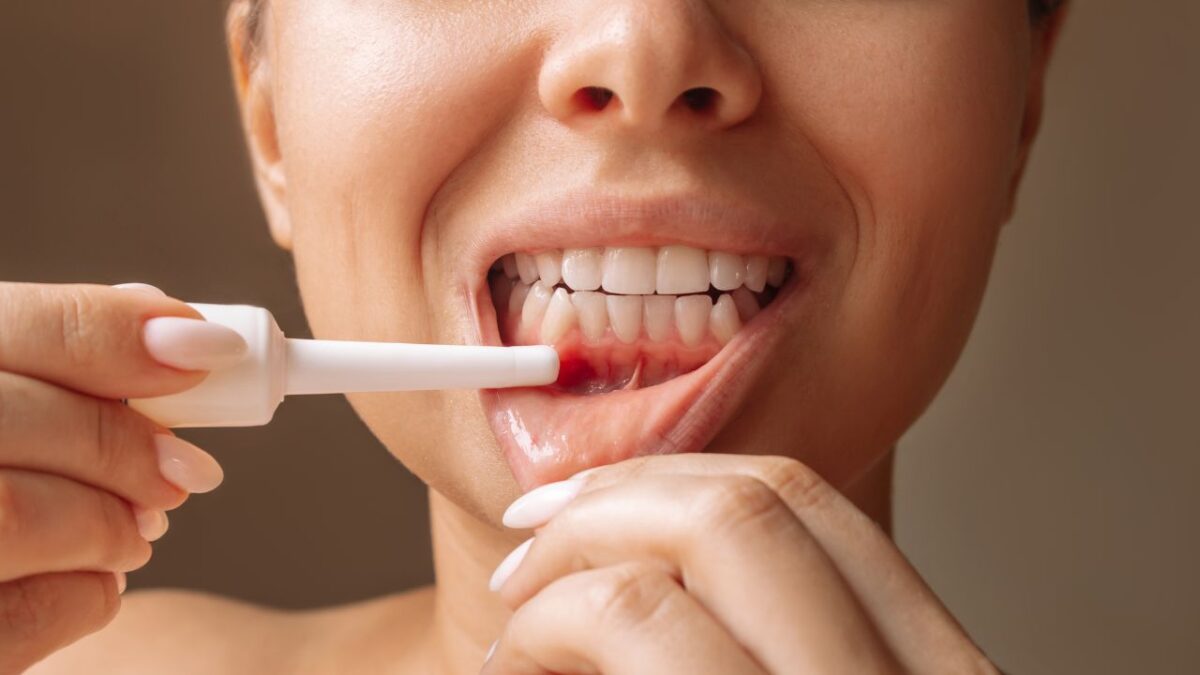Bleeding Gums During Menopause: What You Need to Know

Bleeding gums during menopause are not just a minor nuisance; they’re a sign that your oral health needs attention. As estrogen levels plummet, your body undergoes various changes, and your gums are no exception. They become more sensitive, less resilient, and more prone to inflammation. This condition, often linked to menopause, is a form of gum disease known as menopausal gingivostomatitis.
Why Do Gums Bleed More During Menopause?
The connection between menopause and bleeding gums is primarily due to the hormonal changes your body experiences. Estrogen plays a crucial role in maintaining the health of your gums, influencing the blood flow to the gum tissue and helping to regulate the response of your gums to plaque and bacteria. As estrogen levels drop, your gums may become more reactive to the presence of plaque, leading to redness, swelling, and bleeding during brushing or flossing.
The Role of Plaque and Bacteria
Plaque, a sticky film of bacteria that constantly forms on your teeth, is the main culprit behind gum disease. When plaque is not effectively removed through regular brushing and flossing, it can harden into tartar, further irritating the gums. The bacteria in plaque produce toxins that can irritate the gum tissue, leading to inflammation and bleeding. During menopause, your gums become more susceptible to these bacterial attacks, making diligent oral hygiene even more crucial.
The Risk of Gingivitis and Periodontitis
If left unchecked, the initial inflammation and bleeding of the gums (gingivitis) can progress to a more severe form of gum disease known as periodontitis. Periodontitis affects the supporting structures of the teeth, including the bone, and can lead to tooth loss if not treated. The risk of developing periodontitis increases during menopause due to the heightened vulnerability of the gums and the potential for bone loss associated with osteoporosis.
Addressing Bleeding Gums During Menopause

To combat bleeding gums and prevent further gum disease during menopause, it’s essential to maintain a rigorous oral hygiene routine. Brushing twice a day with fluoride toothpaste, flossing daily, and using an antiseptic mouthwash can help reduce plaque buildup and keep your gums healthy. Regular dental check-ups are also vital, as your dentist can monitor your gum health, provide professional cleanings, and offer treatment options if gum disease is present.
In conclusion, bleeding gums during menopause are a common concern that should not be ignored. By understanding the link between hormonal changes and gum health, and by taking proactive steps to maintain good oral hygiene, you can protect your gums and ensure a healthy smile throughout menopause and beyond.
Other Dental Health Issues During Menopause
Apart from bleeding gums, menopause can bring about other dental health challenges:
- Dry Mouth: Reduced saliva flow, known as xerostomia, is common during menopause. Saliva is crucial for neutralizing acids and washing away food particles. Without enough saliva, you’re at a higher risk of tooth decay and other oral infections.
- Bone Loss: Osteoporosis, a condition associated with menopause, can also affect the bones that support your teeth, leading to tooth loss if not addressed.
- Altered Taste: Some women experience changes in their sense of taste, which can affect their eating habits and nutrition.
- Burning Mouth Syndrome (BMS) in menopause is a condition where a woman experiences an uncomfortable sensation of burning in the mouth, lips, or tongue without any apparent cause. This symptom can be linked to hormonal changes during menopause, leading to dry mouth and altered taste, which contribute to the burning sensation. It’s one of several oral health issues that can arise during this transitional period in a woman’s life.
Tips for Maintaining Dental Health During Menopause
Now that we understand the impact of menopause on dental health, let’s look at some ways to keep your teeth and gums healthy during this phase:

- Regular Dental Check-ups: Visit your dentist regularly for check-ups and cleanings. This is crucial for early detection and management of any oral health issues.
- Good Oral Hygiene: Brush twice a day with fluoride toothpaste and floss daily. Consider using a soft-bristled toothbrush if your gums are sensitive.
- Stay Hydrated: Drink plenty of water to combat dry mouth. You can also chew sugar-free gum or suck on sugar-free candies to stimulate saliva production.
- Eat a Balanced Diet: A diet rich in vitamins and minerals can help support healthy teeth and gums. Avoid sugary snacks and acidic foods that can contribute to tooth decay.
- Manage Osteoporosis: If you have osteoporosis, follow your doctor’s advice on medication and lifestyle changes to help protect your bone health, including the bones that support your teeth.
Takeaway
Menopause is a natural part of aging, but it doesn’t have to take a toll on your dental health. By being aware of the potential issues like bleeding gums and dry mouth, and taking proactive steps to address them, you can maintain a healthy smile throughout menopause and beyond. Remember, your oral health is a window to your overall health, so don’t overlook it during this important phase of your life.
Keep smiling, and don’t hesitate to reach out to your dentist if you have any concerns about your dental health during menopause. Your smile is worth it!
